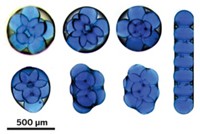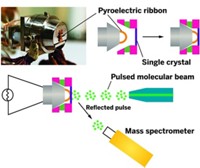Advertisement
Grab your lab coat. Let's get started
Welcome!
Welcome!
Create an account below to get 6 C&EN articles per month, receive newsletters and more - all free.
It seems this is your first time logging in online. Please enter the following information to continue.
As an ACS member you automatically get access to this site. All we need is few more details to create your reading experience.
Not you? Sign in with a different account.
Not you? Sign in with a different account.
ERROR 1
ERROR 1
ERROR 2
ERROR 2
ERROR 2
ERROR 2
ERROR 2
Password and Confirm password must match.
If you have an ACS member number, please enter it here so we can link this account to your membership. (optional)
ERROR 2
ACS values your privacy. By submitting your information, you are gaining access to C&EN and subscribing to our weekly newsletter. We use the information you provide to make your reading experience better, and we will never sell your data to third party members.
Materials
Bioinspired Filter Captures Carbon
ACS Meeting News: Microchannel-filled material based on avian anatomy might one day help remove CO2 from smokestacks
by Lauren K. Wolf
September 10, 2013

To reduce greenhouse gas emissions, industrial plants filter carbon dioxide from smokestacks by passing flue gas through a column filled with water and nitrogen-containing compounds such as monoethanolamine (MEA). Although it’s widely used, this carbon-capture technique isn’t energy efficient, so researchers have been looking for alternative filtration materials capable of trapping large amounts of CO2.

One research team’s efforts to find such materials has yielded a high-surface-area capture membrane inspired by one of nature’s most efficient gas exchangers: a bird’s lungs. The work, by Aaron P. Esser-Kahn of the University of California, Irvine, and colleagues, was reported yesterday at the American Chemical Society national meeting in Indianapolis.
To fly, birds need a lot of energy, so they’ve evolved intricate structures in their lungs to rapidly exchange CO2 for oxygen. “We wanted to be able to match what nature can create,” Esser-Kahn said in a session sponsored by the Division of Polymeric Materials: Science & Engineering.
The chemist and his team produced their bird-lung mimics by stretching polylactic acid fibers of two different diameters between a pair of brass plates. They then filled polydimethylsiloxane into a mold around them. After the PDMS set, the team heated the assembly in vacuum to degrade the tightly packed fibers and leave behind microchannels of two sizes.
When the researchers filled the small-diameter channels with MEA and flowed CO2 through the larger ones, they observed the gas diffuse through the walls of the polymer structure and react with MEA. Surprisingly, Esser-Kahn told the audience, the greenhouse gas transferred most rapidly when the channels were packed into a not-found-in-nature “double square” pattern, rather than a dodecagonal or hexagonal pattern that more closely simulates a bird’s airways.
The Esser-Kahn group’s membrane production method may enable the manufacture of high-surface-area three-dimensional architectures not accessible via standard approaches, says Abraham Duncan Stroock, a chemical engineer at Cornell University. This “newsworthy” work, he adds, “has taken seriously the challenge of recreating the extraordinary rates of mass transfer that are seen in the vascular systems of animals.”
With these preliminary results in hand, Esser-Kahn’s team will next try to optimize the porosity of its filters and filter material, which can break down over time with exposure to MEA.





Join the conversation
Contact the reporter
Submit a Letter to the Editor for publication
Engage with us on Twitter